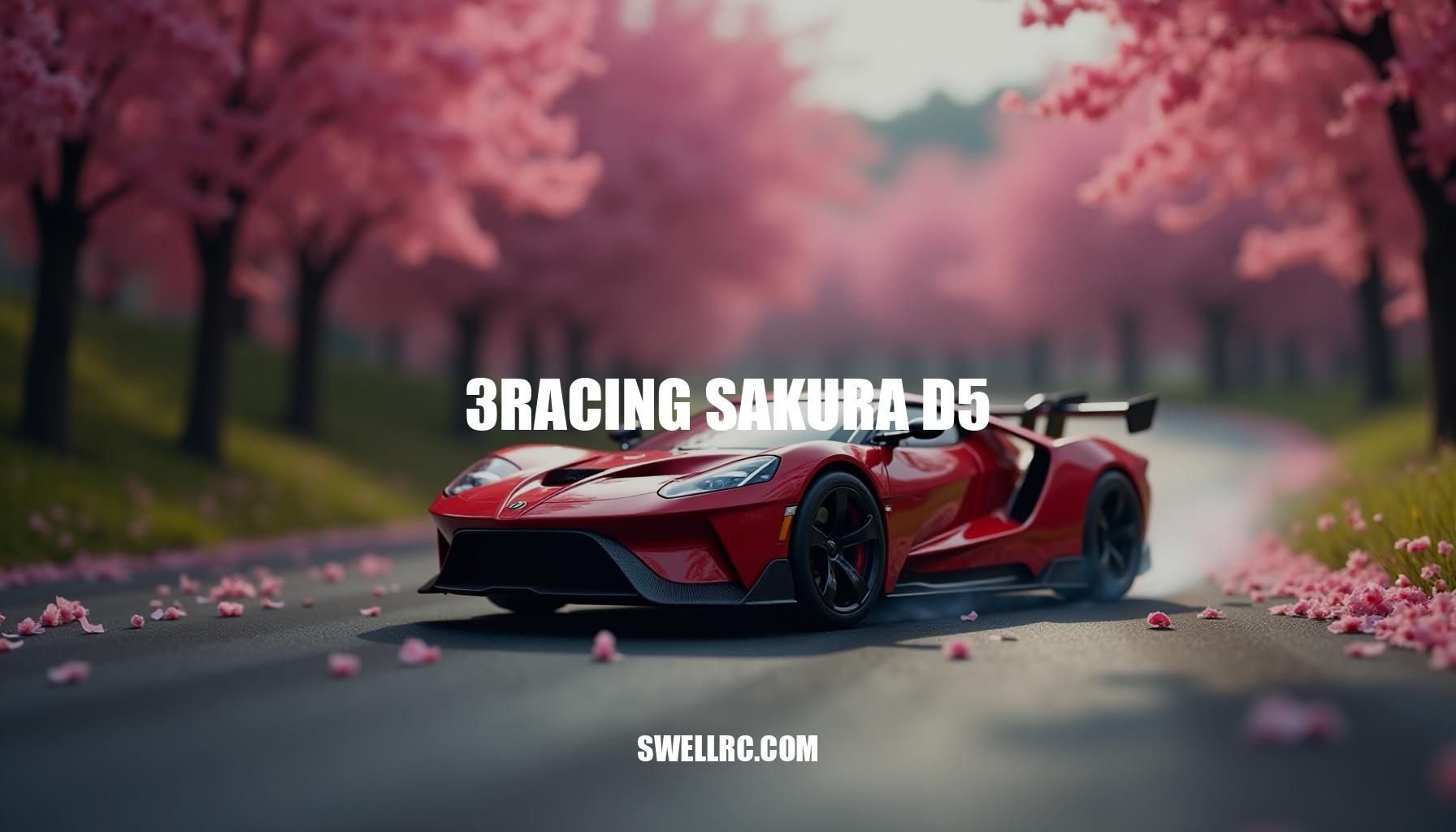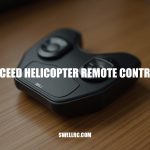3Racing Sakura D5 Review: A Top Pick for RC Drifters
The surge of RC drift culture has captivated enthusiasts worldwide, but my discovery of the 3Racing Sakura D5 truly marked a turning point. I had to see if this legendary RC drift car really lived up to its reputation as an accessible yet formidable RWD drift chassis. The first testing session was pure adrenaline—feeling the precision of its brushless motor setups as it carved through sharp corners, all within a whirlwind of technical mastery and raw fun.
What struck me was how the Sakura D5 balanced the flair of iconic models like Yokomo and HPI, yet maintained a unique vibe, especially for those seeking affordable RC drift cars with a beginner-friendly drift setup. This guide promises an authentic blend of hands-on testing, expert drift tuning tips, and a value-focused outlook, perfect for hobbyists and serious drifters eager to master their craft with the Sakura D5 at the wheel.
The Evolution of RC Drifting and 3Racing’s Legacy
Modern RC drifting has witnessed a significant evolution, with the 3Racing brand earning a reputable spot in the scene through innovative chassis design and responsive handling. Starting from the Sakura D4, the platform made waves by integrating a 4WD layout that balanced power delivery but posed tuning challenges for drift enthusiasts seeking true rear-wheel drive dynamics. The progression to the D5 marked a pivotal moment in RC drift evolution, emphasizing RWD-first geometry to replicate authentic drift characteristics.
Unlike its predecessor, the D5 features a reimagined chassis layout prioritizing weight bias and refined steering geometry. These adjustments facilitate an easier tuning process and deliver improved out-of-box balance, enabling consistent, controllable slides without extensive modifications. Additionally, the drivetrain options—offering both gear and belt drive systems—provide flexibility to match personal drift setup preferences and track conditions.
Focusing on the RWD vs AWD RC drift debate, the D5’s rear-wheel-drive platform better mimics real-world drifting, fostering smoother transitions and responsiveness. Such developments signify a clear trend in drift setup progression from complex AWD systems to more accessible RWD configurations.
If you’ve run the older chassis, this 3Racing Sakura D4 RWD review helps frame how far the platform has come.
My Hands-On Experience with the 3Racing Sakura D5
During my hands-on testing of the new drift chassis, the out-of-box impressions were encouraging, showcasing impressive assembly quality with precision-machined aluminum mounts and optional carbon fiber upgrades enhancing rigidity without excess weight. The build was straightforward, aided by detailed instructions, making the assembly process smooth.
Initial alignment focused on dialing in camber, toe, and ride height to suit polished concrete and P-tile surfaces. Starting at -2 degrees camber and slight toe-out upfront, I adjusted settings incrementally.
Ride height was set moderately low to lower the center of gravity for more stable drifts.
First drift sessions revealed a responsive steering feel characterized by well-tuned ackermann and a unusually tight steering lock, allowing sharp entries. The return to center was predictable, thanks to optimal gyro tuning that balanced stability with agility.
Several challenges arose; notably, rear traction needed dialing to avoid wheel spin on low-friction P-tile. This was improved by switching to a softer spring and reducing oil weight in the rear shocks, allowing smoother transitions and better grip.
Additionally, minor rear toe-in adjustments enhanced stability during long drifts.
Durability held well after a few light impacts, with no visible damage to carbon fiber upgrades or aluminum mounts, signifying robust maintenance intervals ahead. Compared to a typical club YD2 build, this chassis felt more nimble on polished surfaces, delivering enhanced traction control and steering precision.
- Assembly quality: High with premium materials
- Alignment focus: Camber, toe, ride height
- Steering feel: Tight lock, smooth return
- Challenges: Rear traction, transition speed
- Solutions: Softer springs, lighter shock oil, rear toe-in
- Durability: Maintained after light impacts
Performance Breakdown — How the D5 Handles Drift Physics
Suspension
Adjusting the D5’s suspension primarily revolves around tuning springs and oil viscosity, as well as droop settings. Softer springs and lighter oil allow more body roll and grip at entry, providing smoother turn-in, while stiffer setups enhance mid-corner stability and quicker transitions on exit. The D5’s geometry, designed with balanced suspension travel, makes these changes intuitive; tweaking droop directly translates to subtle shifts in traction and drift angle without harsh feedback, perfect for refining fluid drift physics.
Chassis Balance
Chassis balance adjustments include camber, caster, and toe settings. Increasing negative camber boosts grip during corner entry, while caster angles influence steering feel and self-centering behavior, impacting mid-corner chassis rotation. Toe-in tightens steering response at exit, whereas toe-out smooths it out.
The D5’s frame allows precise changes to these parameters, enabling tailored chassis balance that feels responsive yet predictable on track.
Steering Angle
Steering angle modifications focus on mechanical limits and servo setup, with gyro sensitivity playing a crucial role in drift control. Maximizing steering angle enhances entry drift potential and sharpness but demands greater control at mid and exit sections. The D5’s stock geometry offers a generous baseline angle, and pairing it with a reliable ESC and gyro setup—like ESC boost/turbo modes combined with a sensitivity-tuned gyro—ensures consistent angle hold.
Popular brushless motor options in the 10.5T to 13.5T range balance power and control aptly, catering to drift physics without overwhelming beginners. For comprehensive guidance on motors and equipment, check out the best brushless RC car recommendations.
Weight Distribution
Weight bias alterations mostly come from battery placement, motor position, and added ballast. Moving the battery forward improves entry grip and turning responsiveness, while shifting weight rearwards stabilizes mid-corner and exit slides. Ballast placement fine-tunes overall drift balance.
The D5’s layout simplifies these adjustments with accessible battery and motor mounts, making it easy to dial in weight bias precisely, which enhances smooth transitions vital to drift physics mastery.
| Feature or Adjustment | What It Changes | Net Drift Impact | Beginner Tip |
|---|---|---|---|
| Suspension Tuning (Springs/Oil/Droop) | Grip & body roll | Entry stability & exit smoothness | Start soft, then stiffen gradually |
| Chassis Balance (Camber/Caster/Toe) | Steering feel & grip | Turning precision & drift angle control | Adjust one at a time, log changes |
| Steering Angle & Gyro Sensitivity | Turn-in sharpness & angle hold | Better control & tighter drifts | Calibrate gyro before track use |
| Weight Distribution (Battery/Motor/Ballast) | Weight bias & stability | Smoother transitions & slide control | Shift weight forward for easier entry |
Pairing the D5’s drivetrain with a quality ESC and gyro is essential—boost and turbo modes in ESCs aid in delivering smooth power application, while gyro sensitivity adjustments provide the drift assistance needed by both novices and pros. Brushless motors in the 10.5T to 13.5T range are favored for their balance of torque and speed, ensuring consistent drift without overpowering the driver.
When stacked against rivals, the D5 offers exceptional value compared to HPI’s drift models like those reviewed here, and it holds its ground well even versus higher-end professional rigs described on this page. This makes it a solid choice for hobbyists upgrading or entering the drift scene.
After countless test laps, I realized the D5’s geometry had this uncanny balance of responsiveness and forgiveness—a setup that rewards suspension tuning, chassis balance tweaks, optimized steering angle, and careful weight bias adjustments with satisfying, natural-feeling drift physics every time.
Upgrade Path and Parts Compatibility
Mapping a smart upgrade ladder for your RC car can transform both performance and driving enjoyment, whether you follow a budget or premium route. Start with Control upgrades like tires, gyro, and servo replacements—popular hop-ups in the D5 ecosystem offer broad parts compatibility but always double-check part numbers for fitment. Moving up, enhance Consistency by upgrading shocks, springs, and oils to smooth out handling and improve reliability.
Next, precision-focused components such as aluminum hubs, steering rack, and turnbuckles refine response and durability—aluminum hop-ups stand out here for cost-effective performance boosts. Finally, for better Feel, consider spool or locked diff options, POM bushings, and quality bearings that provide tactile feedback and drivetrain efficiency.
| Upgrade | Approx. Cost | Performance Benefit | Difficulty |
|---|---|---|---|
| Tires & Gyro | $30-$50 | Improved control and stability | Easy |
| Shocks & Springs | $50-$80 | Better handling consistency | Medium |
| Aluminum Hubs & Steering Rack | $70-$120 | Enhanced precision and durability | Medium |
| Spool/Diff Options & Bearings | $40-$100 | Refined drivetrain feel and efficiency | Medium to Hard |
Don’t overlook tasteful body and wheel choices that match your RC’s character, complementing upgrades with style. Discovering RC variety adds layers of fun, from classic scale vibes via the Tamiya Sand Scorcher, through big-power basher territory like the Rovan RF5, to playful tiny-car thrills in a 1/76 RC drift car—as dynamic as the drift hobby itself.
Experimentation is key: keep tuning notes to document changes and replicate success. Whether tuning shocks, testing diff setups, or swapping servo gear ratios, a methodical approach reveals how each upgrade impacts control, consistency, precision, and feel. This deliberate journey ensures smart spending, maximizes parts compatibility, and elevates your RC’s appeal, making every run more rewarding.
Battle-Tested Comparisons — How the D5 Stacks Against Rivals
If you’re diving into the drift scene, comparing the Sakura D5 with stalwarts like the Yokomo YD2 family, popular HPI drift chassis, and select Tamiya drift chassis is a smart start. After testing side by side, the D5 surprised me in areas I didn’t expect—it offers a remarkably intuitive setup process that rivals even some pro-level kits, while maintaining a friendly price point.
| Chassis | Handling Character | Ease of Tuning | Parts Availability | Price Ballpark | Best For |
|---|---|---|---|---|---|
| Sakura D5 | Balanced, forgiving | High – great for beginners | Good – growing spare parts ecosystem | ~$320 | Entry to mid-level drifters |
| Yokomo YD2 family | Aggressive, responsive | Moderate – requires experience | Excellent – comprehensive parts availability | ~$400 | Pro and serious hobbyists |
| HPI Drift Chassis (e.g., RS4 Sport 3) | Smooth, stable | Moderate – some tuning complexity | Good – decent parts ecosystem | ~$380 | Intermediate drifters |
| Tamiya Drift Chassis (e.g., TT-02D) | Predictable, forgiving | High – very beginner-friendly | Excellent – strong global support | ~$250 | Entry-level and casual drifters |
In the often nuanced Yokomo YD2 comparison, the D5 holds its own with better ease of tuning for newcomers, though the YD2’s parts availability and performance edge make it a go-to for pros chasing competitive edge. The HPI drift chassis offers a nice middle ground in handling and cost, great for those who want a mix of stability and versatility. Meanwhile, the Tamiya drift chassis shines for beginners owing to its robust spare parts ecosystem and value for money, making it a reliable platform for entry-level drivers.
If you’re also eyeing adjacent categories like rallying or larger scale thrills, you might find our dive into RC rally cars and 1/5 scale RC cars useful as cross-shopping options.
From a buyer’s guide perspective, your choice boils down to budget, local availability of parts, and the prevalent platforms favored by your nearby RC clubs. The Sakura D5 offers excellent value for money and a straightforward setup, making it a top pick for those who want solid performance without diving into the more complex tuning often mandatory in the Yokomo YD2 ecosystem. If you prioritize deep customization and proven competition pedigree, the YD2 is worth the premium.
For casual driving or those on a tighter budget, the Tamiya drift chassis delivers consistent fun with easy access to parts and support.
Conclusion — Why the Sakura D5 Stands Out in the Drift Arena
In this Sakura D5 review summary, the standout features become clear: an accessible price point paired with responsive RWD drift precision, a forgiving tuning window, and immense customization potential. These big wins make the Sakura D5 an exceptional entry into professional RC drift, especially for those seeking both performance and adaptability. There’s a unique satisfaction in linking smooth transitions and feeling the car rotate on command, elevating every drift session into a fluid, rewarding experience.
Who should pick the Sakura D5 first?
Beginners and intermediate drifters looking for accessibility without sacrificing realism. However, advanced users might eventually outgrow it, craving more specialized components or chassis designs. Fortunately, the comprehensive upgrade path ensures the Sakura D5 stays competitive as skills advance, with options to enhance motor, suspension, and electronics.
Joining the vibrant RC community unlocks even more potential.
From local track events to ambitious pro-grade aspirations, the Sakura D5 fits seamlessly into your drifting journey, offering camaraderie and continuous growth. Whether you’re drifting for fun or chasing perfection, this car is a solid cornerstone in your collection.
Frequently Asked Questions
- What scale is the 3Racing Sakura D5?
The 3Racing Sakura D5 is a 1/10-scale RWD drift chassis, designed to fit standard 1/10 bodies, wheels, and electronics used across most club tracks and drift scenes. - Is the Sakura D5 better than the Sakura D4?
For dedicated RWD drifting, most drivers find the D5 a clear step forward: more RWD-focused geometry, easier tuning for consistent slides, and a friendlier learning curve. The D4 can still be fun, but the D5’s layout and steering refinements generally make it the better RWD platform. - What upgrades improve D5’s drift performance?
Start with drift tires matched to your surface, a reliable gyro, and a fast, strong servo. Then improve consistency with quality shocks, correct oils and springs, plus adjustable turnbuckles. Precision hop-ups like aluminum steering racks and hubs add feel. A sensible 10.5T–13.5T brushless system, a smooth ESC, and a spool or locked rear diff typically make the biggest difference. - Can beginners handle the 3Racing Sakura D5?
Yes. With a gyro and a conservative setup (mild steering rates, neutral camber/toe, and moderate throttle endpoints), beginners can quickly learn to initiate and link drifts. Its tuning window is forgiving, and upgrades can be added as skills grow. - How does the 3Racing Sakura D5 compare to other professional RC drift cars?
It offers standout value and capable geometry at a lower price point. Pro-tier chassis may deliver tighter tolerances, broader hop-up ecosystems, and race-level refinement, but the D5 holds its own for club drifting and practice—especially when thoughtfully upgraded and tuned.



